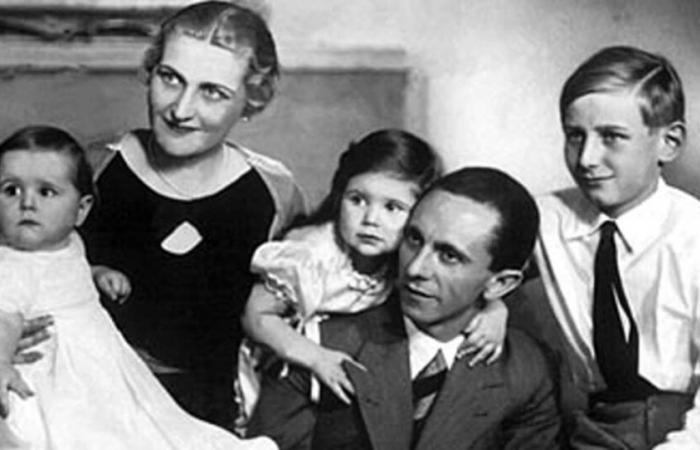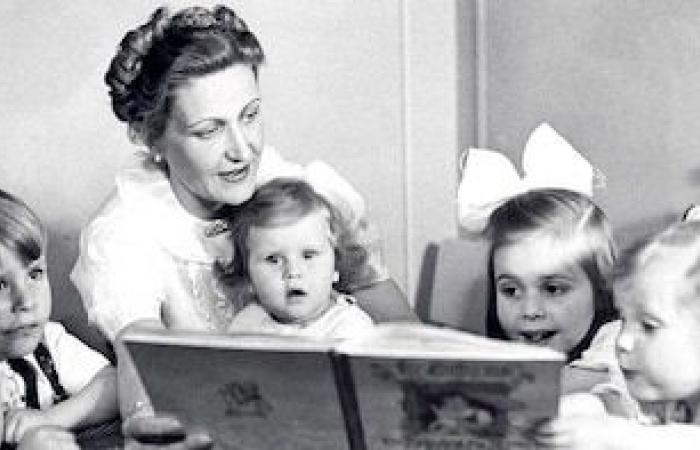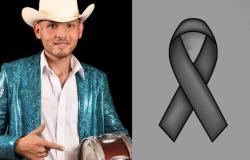In the depths of the dying Berlin, when the city burned under the Soviet bombs and the third Reich was just a skeleton of what had been, Joseph Goebbels made his last decision: a cold, fanatic and brutal act. Together with his wife Magda, murdered his six children And then he took his life. It was on May 1, 1945, the day after Adolf Hitler, the leader to whom they had sworn loyal to the last consequences, committed suicide in his underground bunker. With them, the bloody delirium of Nazism also died.

Joseph Goebbels had been much more than the regime’s propaganda minister: it was the voice that molded the narrative, the puppeteer who built the myth of Hitler as Salvador of Germany, the Hate architect which justified war and extermination. From the microphones of the radio, from the street posters, from each official publication, Goebbels dominated the art of manipulating masses, of distorting the truth until it becomes a lethal weapon. His devotion to Führer was absolute. His life and death were always at the service of that cause.
In addition, Goebbels was obsessed with his own image and need for recognition. With a small and fragile physicist, with a renguera that had marked his childhood, he stood out as a hypnotic speaker who knew how to capitalize on the resentments postwar. His talent was to transform fear, frustration and collective humiliation into nationalist fervor, positioning Hitler as the Salvador that would restore the German pride. He understood, as few, the power of the radio, which would become a key tool to penetrate all the homes of the Reich and consolidate ideological control.

On April 30, 1945, when Hitler and Eva Braun committed suicide in their private room of Führerbunker, Berlin was already a debris cemetery. The Soviets advanced by giant steps, and German surrender was a matter of hours. Goebbels, appointed chancellor in Hitler’s political will, knew that The end was inevitable. But he did not conceive. Neither his wife could imagine a world without Nazism.
Magda Goebbels was, in many ways, the paradigm of the ideal mother for the third Reich. Blonde, elegant, devout, had incarnated for years the model of the Aryan woman: prolific mother, fissure without fissures to the ideals of the party, absolutely loyal. It was the image that Nazism wanted to show the world: the woman who found her fullness in giving children to the country and educating them in the nationalist faith.
Magda came from a middle class family and spent her adolescence in a boarding school in Belgium, where she received a strict and religious education. For a while, he was sentimentally linked to a young Zionist leader, even exploring the possibility of emigrating to Palestine. His life took another course when he married, in 1921, with Günther Quandt, an entrepreneur millionaire Twenty years older than her. The marriage was brief and unhappy, but introduced it into a world of Power and wealth I would never abandon.

The transformation of Magda into fervent national militant was radical. In 1930, he heard a speech from Joseph Goebbels in Berlin that dazzled her. From then on, his admiration For the Nazi movement – and especially by Hitler – he became a central part of his identity. He abandoned any past linked to Zionism and began to carefully build the image of the “First Lady” of the Third Reich, combining beauty, maternity and absolute loyalty to the Führer.
Even in the most intimate details, the devotion of the Goebbels towards Hitler was absolute. As a symbolic gesture of that loyalty, they chose that the names of their six children began with the Letra “H”, en Honor al Führer. Helga, Hildegard, Helmut, Holdine, Hedwig and Heidrun carried in their initials the mark of an ideology that had proved them before even that they could understand it. In their names he was written, without knowing it, his sentence. As historian Peter Longerich said in Goebbels: A Biographythis election was not accidental: it was a deliberate act of personal veneration that reflected to what extent Hitler had occupied the center of his family universe.
Installed in an imposing mansion at the Reichskanzlerplatz in Berlin, the Goebbels family represented the ideal Aria family model that the regime wanted to exalt. His six children were portrayed in official photographs as a symbol of purity and happiness, while his home became a frequent meeting point for the Nazi elite.
But his fanaticism went far beyond the public. Magda was not only willing to die from the regime: I was convinced that Their children should not survive their fall. It was not, for her, a cruel choice but a release: in her crooked logic, there was no possible life outside the Nazi utopia. Leaving his children live, he thought, was to condemn them to a degraded world, enemy, without honor.
The Goebbels, after years of maintaining an impolute facade and being an active part of the Nazi propaganda, were now in a desperate situation. During the last days of the third Reich, the bunker in which they took refuge had become the last bastion of endurancebut the threat of the Soviets was imminent. While the Russian troops quickly approached the city, Joseph Goebbels, like many other Nazi commanders, tried to keep calm in the middle of chaos. However, despair had already taken control.

The afternoon of April 30, Goebbels learned of Hitler’s death. Although the Führer had been its leader and its guide for more than a decade, Goebbels showed no signs of weakness. On the contrary, its determination grew even more. In a last act of loyalty to the cause, he remained in the bunker with his wife and children, and decided to carry out a final act of horror: The death of their own children.
On the night of May 1, Magda convinced each of the children – helga (12 years old), Hildegard (11), Helmut (9), Holdine (8), Hedwig (6) and Heidrun (4) -, who were going to receive sleeping medications and administered doses of morphine, with the help of Helmut Kunz, dentista de las SS. Then, while they slept, placed capsules from cyanide In his mouths, helped by Ludwig Stumpfegger, Hitler’s personal doctor. One by one, the children died in silence, without suspecting the atrocious destiny that awaited them in that dark bunker that had gone from being a center of command to collective grave.
After systematically killing and without regrets to their own children, Magda Goebbels and her husband went out to the Reichskanzlei garden (the Foreign Ministry) to carry out suicide. While the Soviet forces surrounded the city, the couple knew they had no escape. There was no intention to flee, give up or ask for clemency. The end of war, the end of Nazism, had led them to make that decision.
The suicide process was meticulous and cold: Joseph Goebbels He shot in the headand Magda, after biting a cyanide capsule, He fell dead next to him. Some reports indicate that, before the couple took their lives, Goebbels ordered an assistant to shoot the bodies to make sure death was definitive.
The remains of Joseph and Magda Goebbels were found by the Soviet troops on May 2, 1945, partially charged next to the Bunker garden, while the bodies of their six children lay intact in the underground rooms. Initially buried in secret, their bodies were exhumed by the Soviet intelligence and transferred several times to avoid any attempt to commemorate. In 1970, the KGB made a final decision: he completely incinerated them and spread their ashes in a tributary of the Elba River, near the city of Biederitz. Thus, they disappeared physically from the world who had been emblems of absolute fanaticism. There were no tombs, nor tombstones, nor official memory. Only ashes floating in a German river, as the ultimate trail of an ideology turned into ruin.
The death of the Goebbels was the last act of a fanaticism I didn’t know limits. There was no regret, no compassion, or doubts. Only a blind fidelity to an ideal that had led the world to the largest catastrophe of the twentieth century.
Today, remembering May 1, 1945, the echo of that tragedy resonates not only as the end of a war, but as an eternal warning: about the abysses to which the fanaticism can lead when it does not recognize limits, neither humans nor moral.
–







